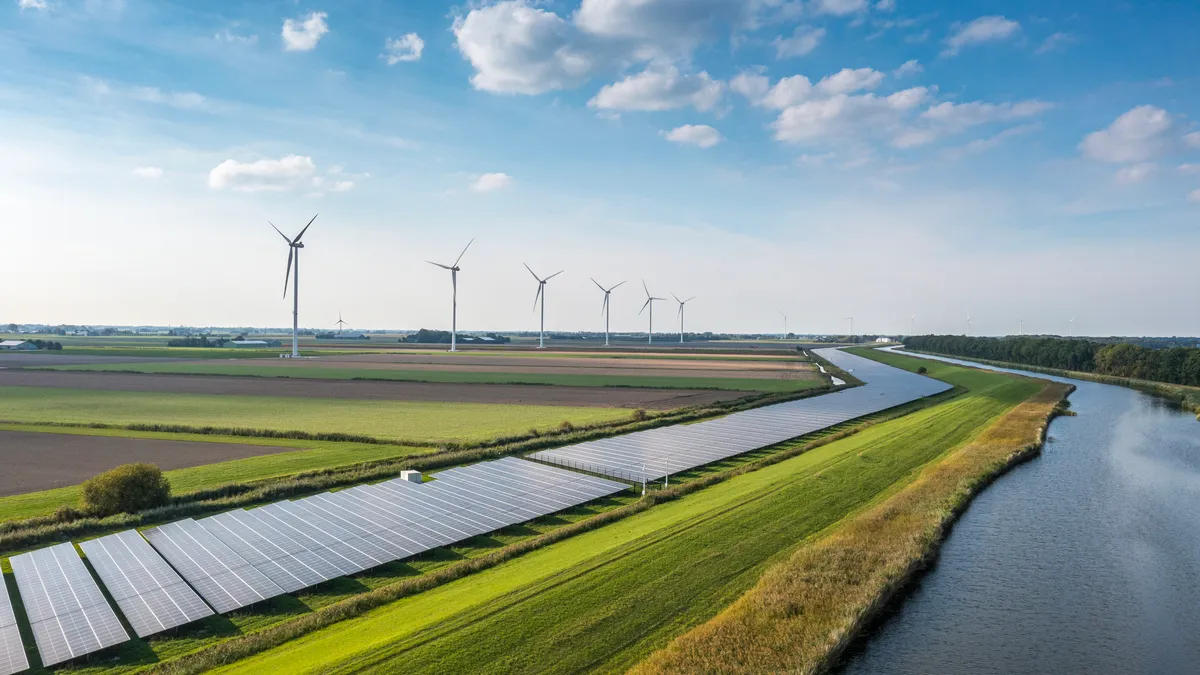Dive Brief:
- Renewable energy companies’ profit margins shrank across the board in 2023, but the reasons for the decline varied from one sector of the industry to the next, according to a report by AlphaSense.
- While rooftop solar is struggling with new customer acquisition, offshore wind has taken a hit due to a crowded marketplace and a lack of differentiation. Hydrogen, meanwhile, has its own problems with cost effectiveness, according to the report.
- The coming year could bring a reckoning for renewable energy companies that aren't able to adapt to a more competitive market, said Xavier Smith, director of energy and industrials research at AlphaSense.
Dive Insight:
If you're thinking that renewable energy will revert back to a status quo of rapid growth and easy money in 2024, you might be disappointed, Smith said.
Beside the inflationary pressures and supply chain constraints that dominated headlines in 2023, each major sector of the renewable energy industry is facing its own set of difficulties that seems unlikely to resolve in 2024, Smith said.
In the solar industry, the profitability of rooftop solar installations has declined as the cost of customer acquisition has increased. Most early adopters have already installed solar, Smith said, and bringing more hesitant homeowners into the fold is a long and often expensive process.
“Firms like Sunrun have partnerships with stores like Costco and Home Depot, and running these stands at these retail outlets is pretty costly,” Smith said. “And they are not getting the customer return that they anticipated.”
Tesla, Smith notes, has attempted to solve the problem by moving its sales operations to an online platform. But consumers seem to prefer human interaction in solar sales — Tesla has lost market share in the past year to other major installers.
Meanwhile, it's no secret that offshore wind struggled to maintain profitability in 2023. But while offshore wind developers have cited rising costs and inflation as the reasons for project cancelations this year, Smith said there are other issues that haven't received as much attention.
The offshore wind industry, he said, is overcrowded, with too many companies offering essentially identical products. This forced developers to try to compete on cost by bidding razor-thin margins that left no room for error when economic conditions changed.
Hydrogen has also experienced cost-related difficulties in the past year, Smith said. This emerging sector has struggled to establish itself as a cost-competitive energy resource, and will likely continue to do so until the cost of transporting hydrogen is reduced. Widespread adoption of hydrogen is unlikely until dedicated pipelines are built, Smith said.
None of this is meant to suggest that renewables can't or won't continue to grow, Smith said, but he believes many renewables companies are still waiting for markets to return to a pre-pandemic paradigm where financiers choose investments based almost solely on a company's potential for growth.
“Firms will have to generate their own cash flow” in 2024, Smith said. “I think things will change, but I don't think we will go back to that plentiful capital environment any time soon. The firms that don't adjust ... they're going to struggle.”














